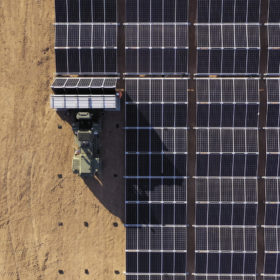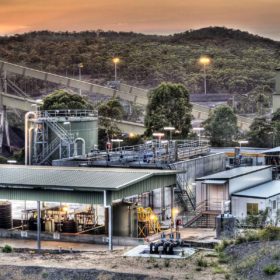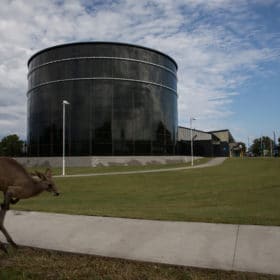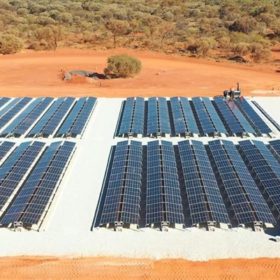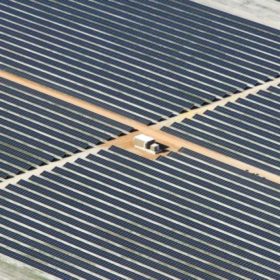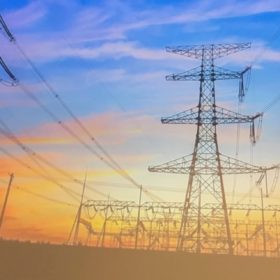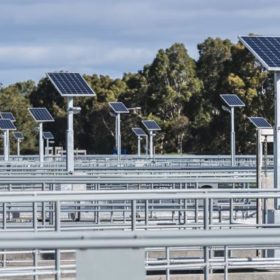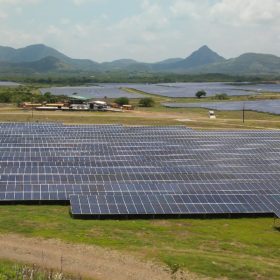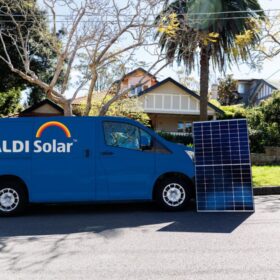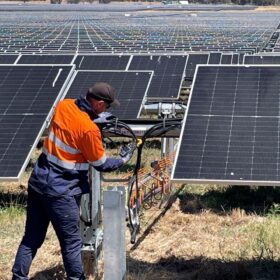Weekend read: Maverick not only by name
A small number of utility-scale PV arrays of an entirely different nature are taking shape Down Under. Over the past six years, Aussie solar startup 5B has been developing and deploying its pre-assembled and relocatable Maverick mounting structures “on a shoestring budget.” But with a major solar developer having joined as a strategic investor, the company is now looking to make prefabricated arrays a mainstream option for utility-scale PV.
Hydro storage project pumps new life into old coal mine
Mining company Centennial Coal has received more than $5 million in government funding to investigate the feasibility of turning an old underground coal mine near Newcastle into a pumped hydro storage site which could supply 600 MW of renewable energy to the grid.
‘Water battery’ a winner for Australian university
An award-winning Australian solar-powered ‘water battery’ has been lauded as an unmitigated success with figures from the University of the Sunshine Coast (USC) revealing the system generated more than 3 GWh of electricity in its first 12 months of operation.
Gold miner rolls out solar PV and battery system at exploration camp
Australian gold mining company Gold Road Resources will be relying on a ‘state-of-the-art’ renewable energy system as it continues operations at its Yamarna exploration camp about 1,200 kilometres east of Perth.
Australia No.1 in the world for installed solar PV capacity per capita
Australia has cemented its place at the vanguard of the solar energy industry with a new International Energy Agency (IEA) report confirming the nation has the highest installed solar PV capacity per capita in the world.
Transmission Project declared ‘critical’ as NSW pushes ahead with first REZ
The Central West Orana Renewable Energy Zone (REZ) Transmission Project has been declared a ‘Critical State Significant Infrastructure’ project, with the New South Wales Government granting it priority status throughout the approvals process.
Melbourne Water takes plunge with 19 MW solar farm
Construction is set to commence on one of the largest behind-the-meter solar power installations in Australia with Beon Energy Solutions to begin work next month on a 19 MW solar farm at Melbourne Water’s Eastern Treatment Plant (ETP).
States are leading the way in the climate power shift
It’s 2020, and there has been a shift in the balance of power. Not in the Senate, but between the federal government and the states. All last summer during the bushfires – while the Prime Minister was infamously not holding a hose – it was the premiers and chief ministers who were right beside emergency services leaders, working to keep people safe and informed.
Improving PV-based hydrogen generation with loss‐mitigation techniques
Australian scientists have demonstrated two loss-mitigation techniques that could improve solar‐to‐hydrogen (STH) conversion efficiencies and may lay the ground for cheaper PV-powered hydrogen generation. By combining the two techniques, they were able to achieve an STH efficiency of around 19.4% at realistic operating temperatures.
More panels than pupils: remote primary school kicks off WA’s solar PV program
The farming community of Scaddan, 50km off Western Australia’s southern coast, has kicked off the state’s Solar Schools Program with the first of 30 planned systems installed.
